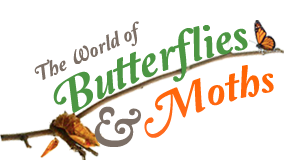Setting Spiders
Preservation Of Spiders For The Cabinet
Forseveral years past, I have devoted a portion of my leisure time to the arrangementof the collection of Arachnidae of the Natural History Museum of theUniversity of Gand. This collection, which ispartially a result of my own captures, is quite a large one, for a universitymuseum, since it comprises more than six hundred European and foreignspecimens. Each group of individuals of the small forms and each individual ofthe large forms is contained in a bottle of alcohol closed with a ground glassstopper, and, whenever possible, the specimens have been spread out and fixed uponstrips of glass.
The lossof alcohol through evaporation is almost entirely prevented by paraffining thestoppers and tying a piece of bladder over them.
Properlylabeled, the series has a very satisfactory aspect, and is easily consulted forstudy. The reader, however, will readily understand how much time and patiencesuch work requires, and can easily imagine how great an amount of space thecollection occupies, it being at least twenty times greater than that thatwould be taken up by a collection of an equal number of insects mounted in theordinary way on pins and kept in boxes.
Theseinconveniences led me to endeavor to find out whether there was not some way ofpreserving spiders, properly so called, in a dry state, and without distortionor notable modification of their colors.
Experiencelong ago taught me that pure and simpledesiccation, after a more or less prolonged immersion in alcohol, givespassable results only with scorpions, galeodes, phrynes, and mygales, andconsequently with arachnides having thick integuments, while it is entirelyunsuccessful with most of the spiders. The abdomen of these shrivels, thecharacteristic colors disappear in great part, and the animals becomeunrecognizable.
Somethingelse was therefore necessary, and I thought of carbolated glycerine. Myprocess, which I have tried only upon the common species of the country -Tegenaria domestica, Epeira cucurbitina, Zilla inclinata, etc., havingfurnished me with preparations that were generally satisfactory. I think Ishall be doing collectors a service by publishing it in the Naturaliste.
Thespecimens should first be deprived of moisture, that is to say, they should beallowed to remain eight or ten days in succession in 50 per cent. alcohol andin pure commercial alcohol. Absolute alcohol is not necessary.
Afterbeing taken from the alcohol, and allowed to drain, the specimens are immersedin a mixture compound of
- Pure glycerine 2 volumes,
- Pure carbolic acid in crystals 1 volume.
In thisthey ought to remain at least a week, but there will be no harm if they areleft therein indefinitely, so that the collections of summer may be mountedduring winter evenings.
Whatfollows is a little more delicate, although very easy. After being removed fromthe carbolated glycerine, the spiders are placed upon several folds of whitefiltering paper, and are changed from time to time until the greatest part ofthe liquid has been absorbed. An insect pin is then passed through thecephalothorax of each individual and is inserted in the support upon which thefinal desiccation is to take place. This support consists of a piece of sheet corktacked or glued at the edges to a piece of wood at least one inch in thickness.Upon the cork are placed four or five folds of filtering paper, so that theventral surface of the pinned spider is in contact with this absorbing surface.For the rest, the legs, palpi, spinnerets, etc., are spread out by means offine pins, precisely as would be done in the case of coleoptera.
SETTINGBOARD FOR SPIDERS.
A. Absorbent papers. B. Sheet cork. C. Wooden support.
Thesetting board is put for two or three months in a very dry place under coverfrom dust.
Thespiders thus treated will scarcely have changed in appearance, the abdomen ofthe largest Epeiras will have preserved its form, the hairs will in nowise havebecome agglutinated, and a person would never suspect that glycerine hadperformed the role.
The formswith a large abdomen require a special precaution; it is necessary to pass themounting pin through a piece of thin cardboard or of gelatine prolonged behindunder the abdomen, because the latter is heavy, and the pedicel that connectsit with the cephalothorax easily breaks.
Thespecimens are mounted in boxes lined with cork, just as insects are.
As thereis nothing simpler than to have in one’s laboratory three bottles, two of themcontaining alcohol and the other containing carbolated glycerine, and as it iseasy to make setting boards capable of holding from twenty to thirtyindividuals at once, it will be seen that, with a little practice, the methodis scarcely any more complicated than the one daily employed for coleoptera andorthoptera, which latter, too, must pass through alcohol, and be pinned, spreadout, and dried. There are but two additional elements,carbolated glycerine and absorbent paper. I do not estimate the time necessaryfor desiccation as being very long, since the zoologist can occupy himself withother subjects while the specimens are drying. Let us add that the processrenders the preservation indefinite, and that destructive insects are not to befeared. Some vertebrates, such as monkeys, that I preserved in the flesh ten years ago, by a nearly identical method, are still intact – F. Plateau, in LeNaturaliste.
